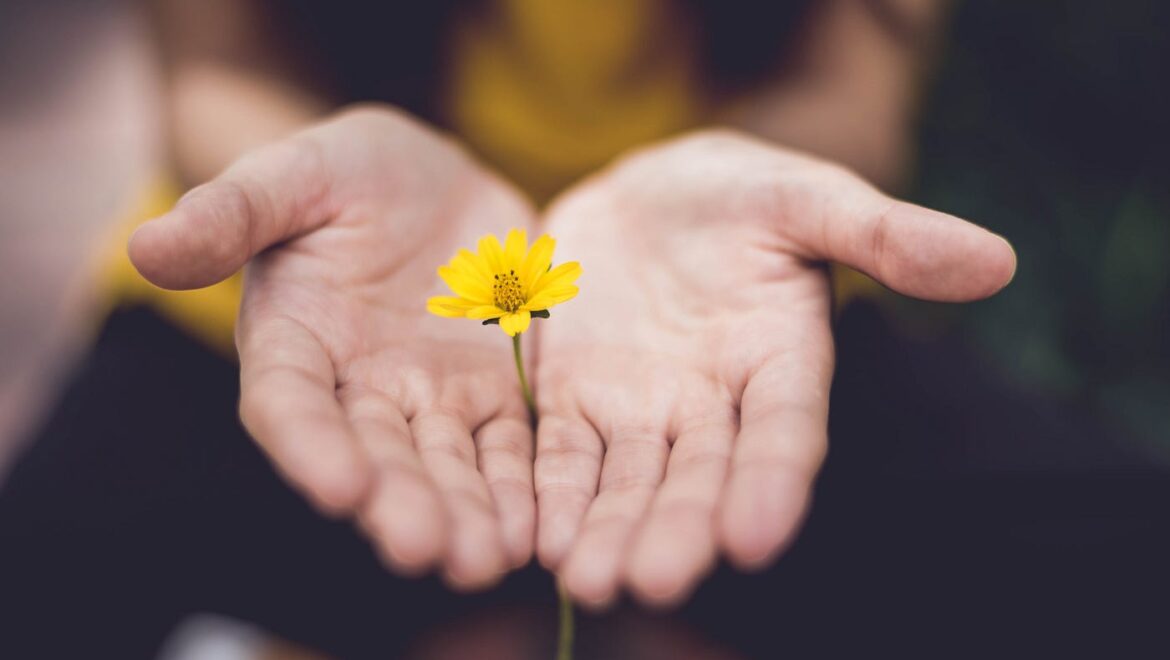This Thich Nhat Hanh Poem is the Most Powerful I’ve Ever Read
A few poems have always stood out to me as the most beautiful and complete. “The Rime of the Ancient Mariner” by Samuel Taylor Coleridge and “Elegy Written in a Country Churchyard” by Thomas Gray top that list.
But for sheer power and emotion, nothing surpasses this poem by the venerated Buddhist monk, Thich Nhat Hanh. Here it is, in its entirety:
“Please Call Me by My True Names”
Don’t say that I will depart tomorrow —even today I am still arriving.
Look deeply: every second I am arriving
to be a bud on a Spring branch,
to be a tiny bird, with still-fragile wings,
learning to sing in my new nest,
to be a caterpillar in the heart of a flower,
to be a jewel hiding itself in a stone.I still arrive, in order to laugh and to cry,
to fear and to hope.The rhythm of my heart is the birth and death
of all that is alive.I am the mayfly metamorphosing
on the surface of the river.
And I am the bird
that swoops down to swallow the mayfly.I am the frog swimming happily
in the clear water of a pond.
And I am the grass-snake
that silently feeds itself on the frog.I am the child in Uganda, all skin and bones,
my legs as thin as bamboo sticks.
And I am the arms merchant,
selling deadly weapons to Uganda.I am the twelve-year-old girl,
refugee on a small boat,
who throws herself into the ocean
after being raped by a sea pirate.
And I am the pirate,
my heart not yet capable
of seeing and loving.I am a member of the politburo,
with plenty of power in my hands.
And I am the man who has to pay
his “debt of blood” to my people
dying slowly in a forced-labor camp.My joy is like Spring, so warm
it makes flowers bloom all over the Earth.My pain is like a river of tears,
so vast it fills the four oceans.Please call me by my true names,
so I can hear all my cries and my laughter at once,
so I can see that my joy and pain are one.Please call me by my true names,
so I can wake up,
and so the door of my heart
can be left open,
the door of compassion.(Copyright: Plum Village Community of Engaged Buddhism, Inc.)
Pardon the inartful language, but this poem blows me away. So beautiful. So poignant. So powerful.
What inspired Thay, as Thich Nhat Hanh was called, to write the poem? The roots lay in the aftermath of the Vietnam War.
Thay had been exiled from Vietnam in 1966 for his opposition to the war. He landed in southwest France where he created the Plum Village Monastery.
Letters from Vietnam refugees
It was there that he received thousands of letters from fleeing refugees, most relating the horrors they experienced. One such letter told of a twelve-year-old girl who was so distraught after being raped by a Thai sea pirate that she jumped off the boat and drowned herself.
Which is awful. And tragic. And filled with evil.
And that is what the poem is about. Reconciling with evil. And extreme suffering.
Evil in today’s world
We’ve all pondered that question at some point. Whether it’s the slaughter of innocent Gazans, innocent Israelis, or innocent Ukrainians. Or the atrocities committed by Boko Haram in Somalia. Unfortunately, it’s a long list in today’s world.
How do we make sense of it all?
I read somewhere that toward the end of his life, the brilliant French philosopher, Voltaire, said that the one area he’d made no progress on over the course of his life was understanding evil. He said:
“The question of good and evil remains in irremediable chaos for those who seek to fathom it in reality. It is mere mental sport to the disputants, who are captives that play with their chains.”
But Thay would disagree, as evidenced by this poem. He says it’s too easy to feel for the girl and hate the pirate. That if he were born in the same village as the pirate and raised under the same conditions, he would also have become a pirate.
Hundreds of babies were born every day in the Gulf of Siam back then and Thay felt that it was up to all of us to help improve the conditions these people grew up in so they didn’t become pirates in 25 years. He summed it up beautifully and bluntly:
“If you take a gun and shoot the pirate, you shoot all of us, because all of us are to some extent responsible for this state of affairs.”
What’s my take? First thing to know is that I started this article on Monday (it’s now Saturday) and couldn’t handle it. It was too heavy. But it weighed on me all week, to the point that I had to sit my butt in the chair and do it, weightiness and emotionality be damned.
Because, as I’m sure you’ll agree, it doesn’t get much heavier than tackling the topic of evil and mass suffering. I’ve listened to and read the teachings of people like Ram Dass and Michael Singer on this most vexing of matters.
The story of Ram Dass and Maharajii
My take starts with Ram Dass, who mentioned a few times in his talks a conversation he had with his guru, Maharajii. Ram Dass told Maharajii in 1971 that he was going to go to Bangladesh to use his VW bus as an ambulance for the catastrophic war raging there. Maharajii saw how distraught Ram Dass was over the situation and said to him:
“Ram Dass, don’t you see it’s all perfect?”
Which outraged Ram Dass who found nothing resembling perfect in other peoples’ suffering.
Maharajii said one thing over and over to his followers. He said, “Sub ek,” which, translated from Hindi, means “All one.” (Here’s an article I wrote a few years back on this topic.) It was one of his only teachings, the other being to simply love everyone, serve everyone and remember God.
We’re all one
Why do I bring that up? Because this “All one,” idea lies at the core of Thay’s poem. We’re all one. And if we’re all one, then we’re all the pirate. We’re all the twelve-year-old girl. We’re all the Politburo official. We’re all the prisoner suffering in the forced-labor camp.
Do I fully understand this? No. I have a sense that we’re all one, but I don’t know it. I have a sense, as I’ve written many times, that we all carry a little slice of God within us. But I don’t know it.
That’s what’s so hard about this paradoxical truth of life. That there is, as Thay beautifully describes it, ‘Joy, like spring, so warm it makes flowers bloom all over the Earth.’ But at the same time, “Pain, like a river of tears, so vast it fills the four oceans.’
The perfection found in joy and pain
There’s both. There’s joy and pain. And in that joy and pain, according to Maharajii and Thay, lies perfection.
What are we to do with that awful truth?
This is where Thay offers something concrete that we can do. It’s the only thing I’ve heard, in all my years studying this stuff, that makes any sense to me.
Fittingly, Thay ends his beautiful poem with this suggestion. Which is this:
Keep our hearts open.
By doing so, we allow the candle of compassion to keep burning within us.
Compassion. It’s the last word of this poem. And if one were forced to reduce Thay’s teachings to one word, compassion would be it.
The takeaway
So there it is, my friends. The takeaway of takeaways from Thay’s poem is this:
In the face of the evil and inexplicable suffering that afflicts our world, the best thing we can do is keep our hearts open. Which means, no matter how bad things get, we never close our hearts and give up on the world.
Because we’re all in it together.
All one.










